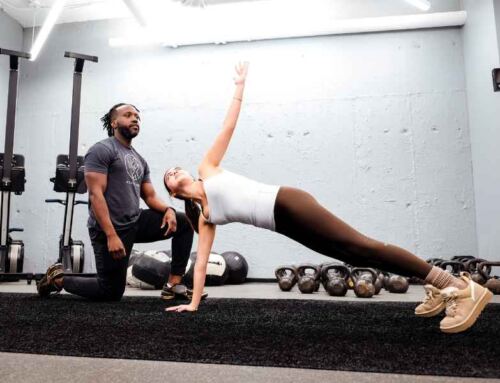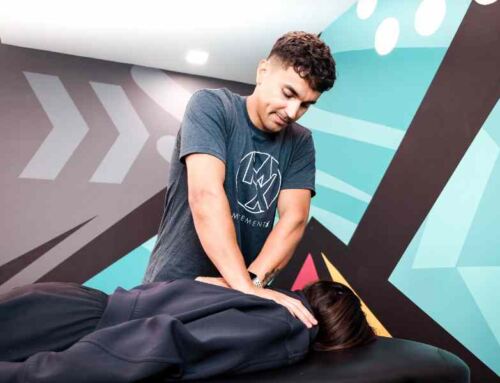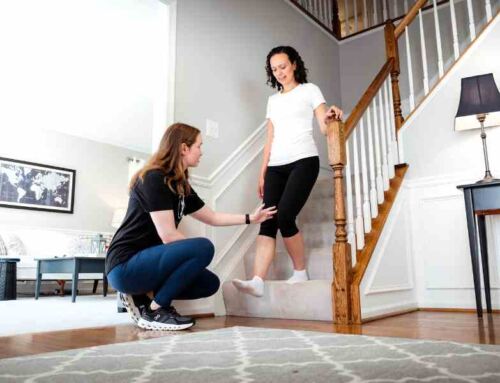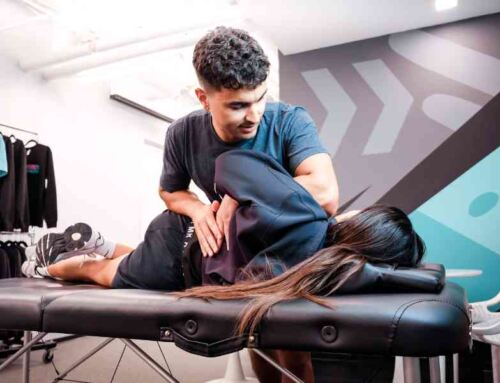Words Matter: Transforming Patient Care Through Better Communication
As physical therapists and healthcare providers, our ability to impact our patients extends far beyond our manual skills or the exercise programs we create. Every conversation we have with our patients is an opportunity to positively (or negatively) impact their care. While it might seem intuitive that our words matter, you might be surprised by their direct impact on a patient’s perception of their condition, their progress, and their overall experience in physical therapy.
A PT visit is multi-dimensional and unique to the provider’s skillset and the patient’s presentation, but what element of a visit is universal regardless of context?
Communication.
Communication during a visit takes many forms, but most frequently takes shape verbally. Interestingly, verbal communication is often rated by patients as one of the most important qualities in a physical therapist. And to make things even more complicated, not only does what you say matter, but so does what you believe. In fact, research has found that physical therapists’ beliefs about their own low back pain directly impacted the recommendations and advice given to patients.
Although making changes to your patient communication might feel daunting, this article will provide some simple tips and tricks to help ensure your communication skills are as strong as your clinical abilities.

3 Ways to Change the Narrative
When it comes to patient communication, we see fairly consistent themes in the literature; positive language and framing produces more positive outcomes, while negative language begets negative results. So what can we as providers do to leverage our communication skills to drive patient experience and outcomes?
1. Reflect On Our Own Biases and Opinions
Communication with your patient starts before they even step foot through the door. How many times have you found yourself reading through the patient’s chart prior to their evaluation and begun to make assumptions about their presentation, only to be lead to completely different differential diagnosis through your subjective and objective findings? Our clinical biases and opinions are often rooted in our own experience and can be invaluable in our decision making, but it is important to take stock of how your own perceptions might impact the care you provide.
One of the simplest ways to check in with ourselves and validate our opinions is by staying up to date with the latest research or clinical practice guidelines. Consider following or subscribing to journals like the Journal of Orthopedic and Sports Physical Therapy or the Physical Therapy & Rehabilitation Journal.
2. Invite the Patient Into the Conversation
The patient and provider relationship goes both ways! When patients feel like they are an active participant in their care plan, we know their outcomes and engagement are better, so be sure to ask the patient for their input, both about their condition and their experience in PT. One of the simplest ways to invite the patient to communicate their perspective is through patient reported outcome measures (PROMs). The measures provide patient informed data to supplement the clinical data you derive during your evaluation and ongoing care. While it might seem simple, the act of asking for the patient’s opinion creates a sense of shared decision making that can drive patient satisfaction and improve outcomes.
3. Reframe Our Common Clinical Phrases
Just as our treatment style evolves over our career, so too does our communication style. Clinicians find phrases, terms, or examples to describe common clinical topics to their patients. When reflecting on the phrases you use in your practice, consider making changes like these:
| Positive, Alternative Choices for Common Clinical Topics | |
| Chronic Degenerative Changes | Normal age changes |
| Negative test results | Everything appears normal |
| Bone on Bone | Narrowing or Tightness |
| Instability | Needs more strength and control |
| Wear and Tear | Normal age changes |
| Neurological | Nervous system |
| Don’t worry | Everything will be okay |
| Tear | Pull |
| Damage | Reparable harm |
| Paresthesia | Altered sensations |
| Trapped nerve | Tight, but can be stretched |
| Lordosis | The normal curve in your back |
| Kyphosis | The normal curve in your back |
| Bulge/herniation | Bump/swelling |
| Diseases | Condition |
| Effusion | Swelling |
| Chronic | It may persist, but you can overcome it |
| Diagnostics | X-ray or scan |
| You are going to have to live with this | You may need to make some adjustments |
Table and terms adopted from Sticks and Stones: The Impact of Language in Musculoskeletal Rehabilitation.
Or arm yourself with evidence-based statistics to let your patients know they aren’t alone:
| Diagnosis or Clinical Finding | Evidence-Based Response |
| Rotator Cuff Tear | Rotator Cuff Tears are one of the most common injuries of the shoulder, especially as we age, however, finding a tear on your imaging does not always mean you will have pain. In fact, close to 50% of patients with a rotator cuff tear are asymptomatic, meaning they don’t report any pain! |
| Low Back Pain | More than half of people over the age of 30 will see some age related changes on an MRI of their low back, without reporting any symptoms. |
Words to the Wise
“Pain is an ideal habitat for worry to flourish.” – Eccleston and Crombez
The impact of communication and connection extends far beyond the clinic walls. Socializing with others can directly impact how we feel, with real physiological impacts on our health. Simply saying “hello” to your neighbor has an impact on your general well-being!
Now as physical therapists, we are uniquely positioned to impact our patients’ lives, not just through movement, but through the words we use. By being mindful of our language, making it positive, clear, empowering, and empathetic, we can create an environment that fosters trust, boosts self-efficacy, and ultimately leads to better outcomes.
Let’s continue to use our words wisely, because in physical therapy, what we say can be just as powerful as what we do.
About the Author
Dr. Bryn Bonner is a doctor of physical therapy and performance coach in the Washington, D.C. and Maryland area. Bryn focuses on orthopedic care, sports injuries, and post-operative care with a specialty in golf and running. Dr. Bonner is always keen to design plans and programs that meet you where you and evolve with you as your movements grow.








